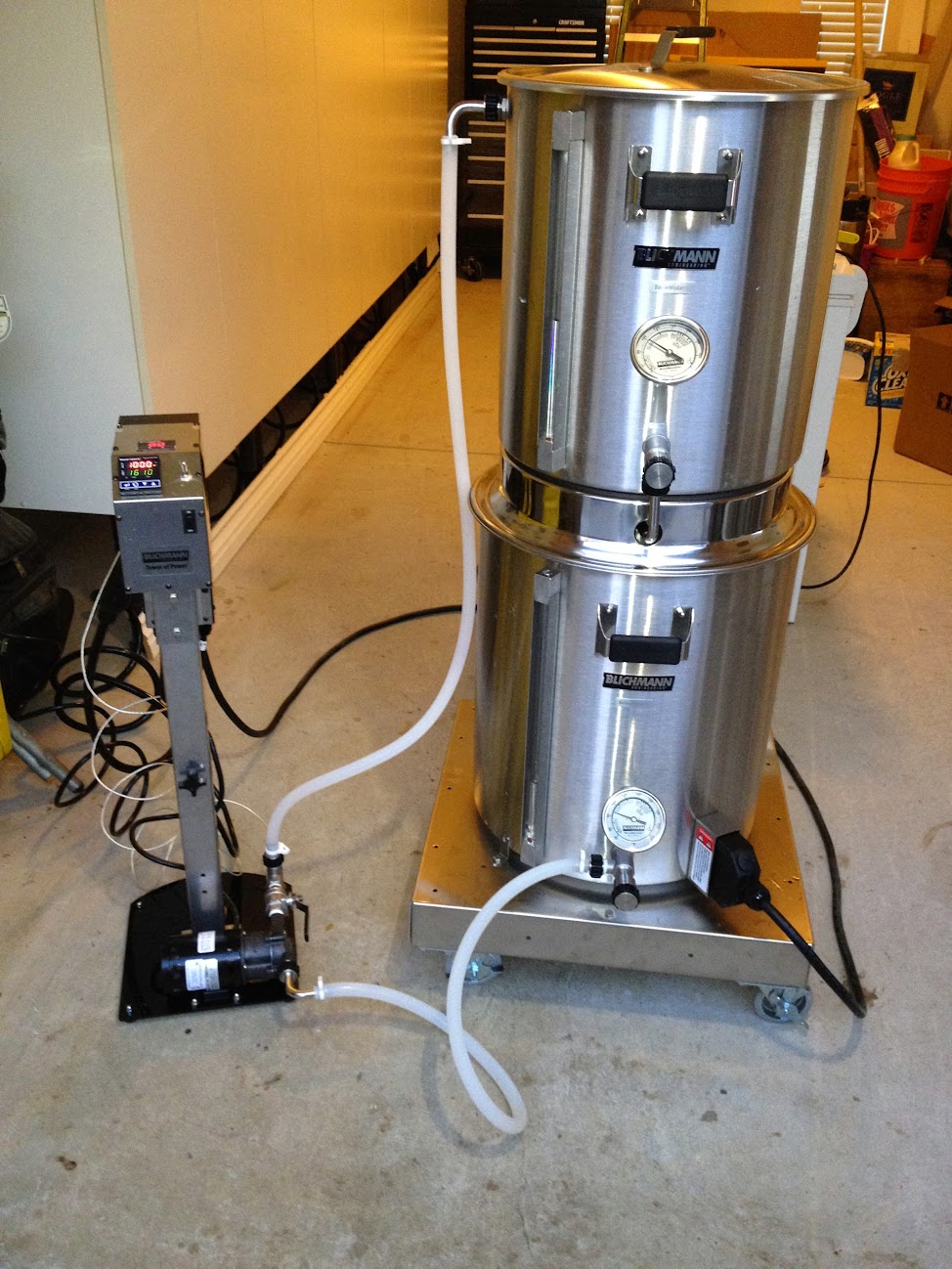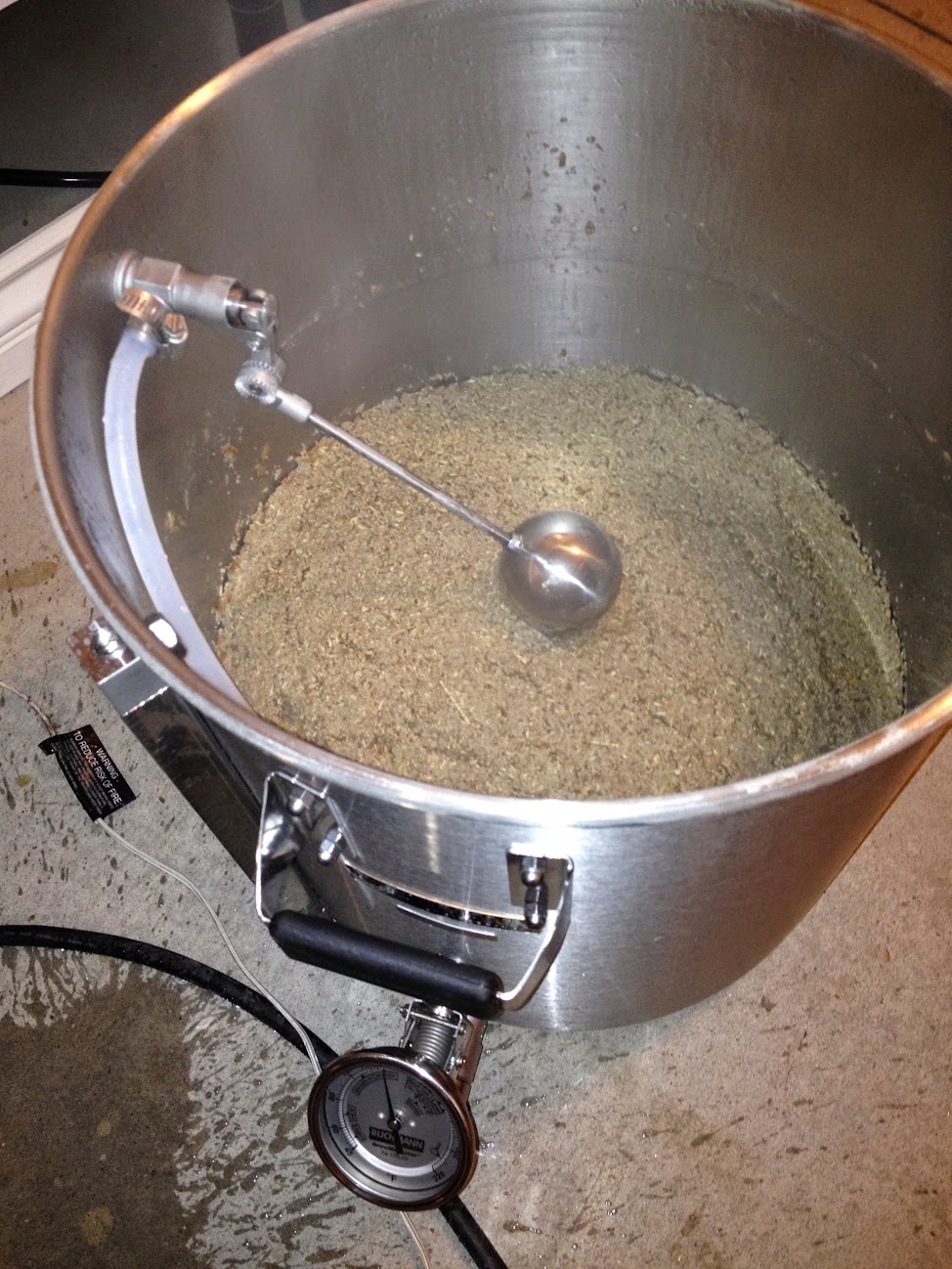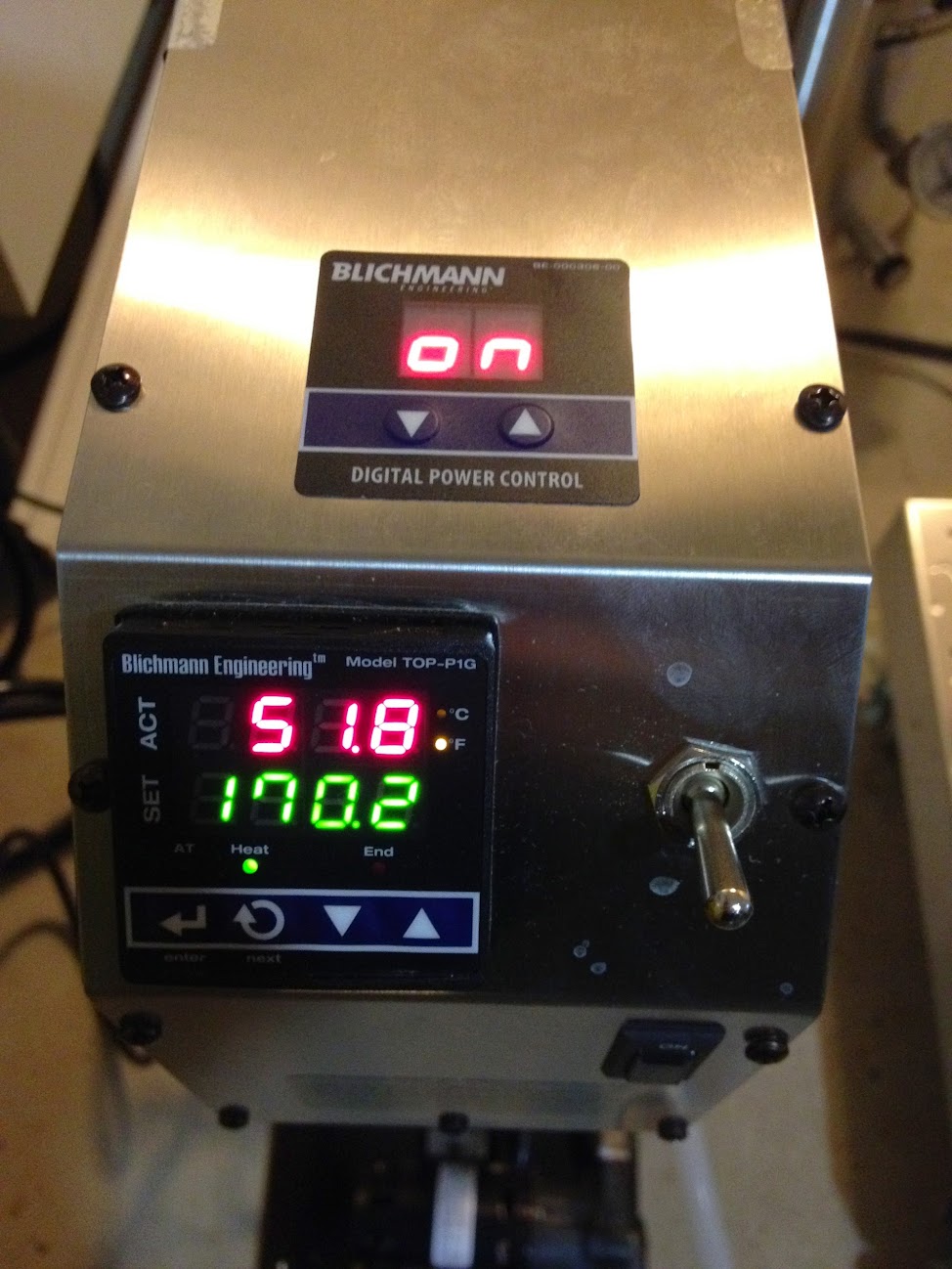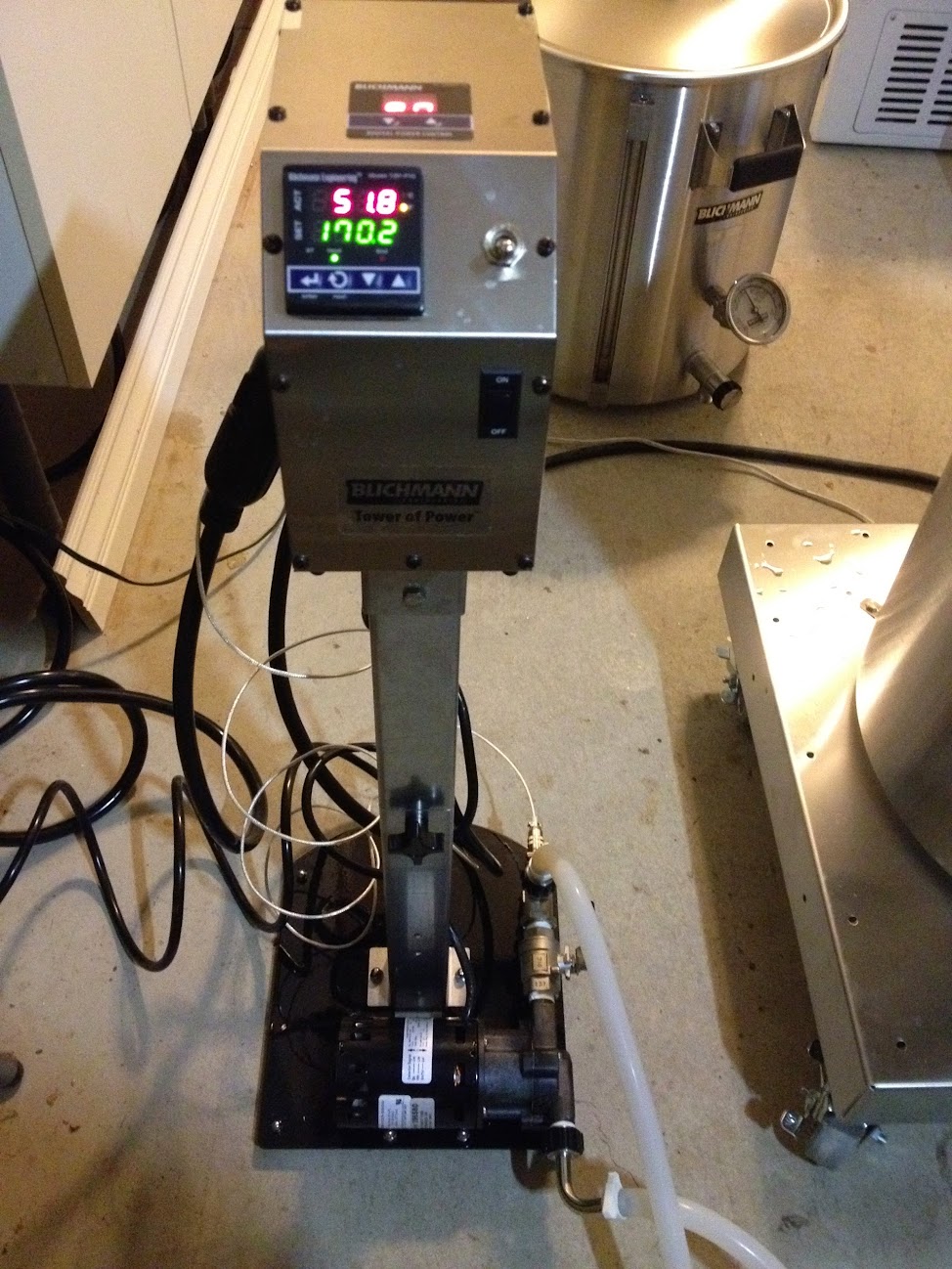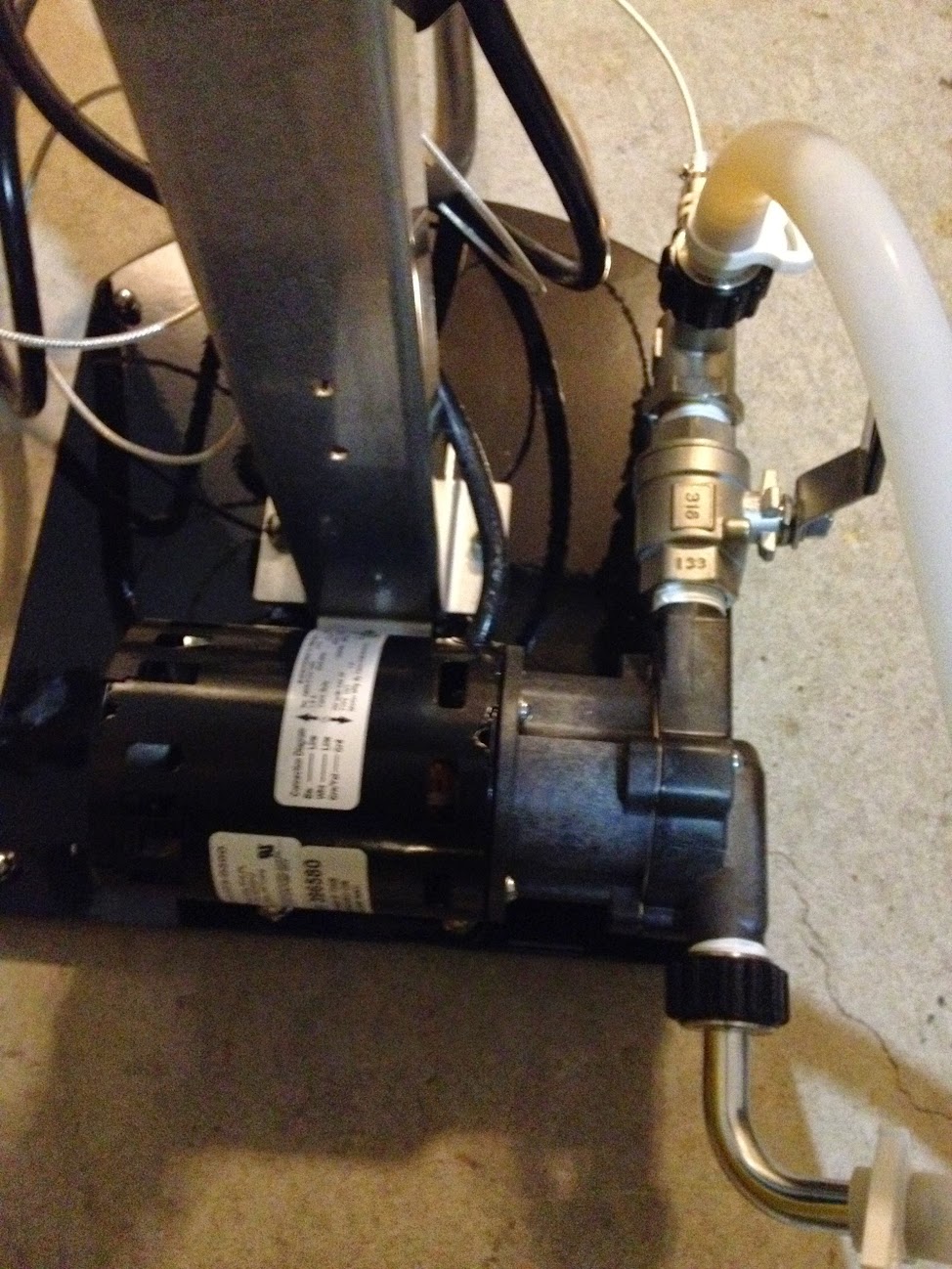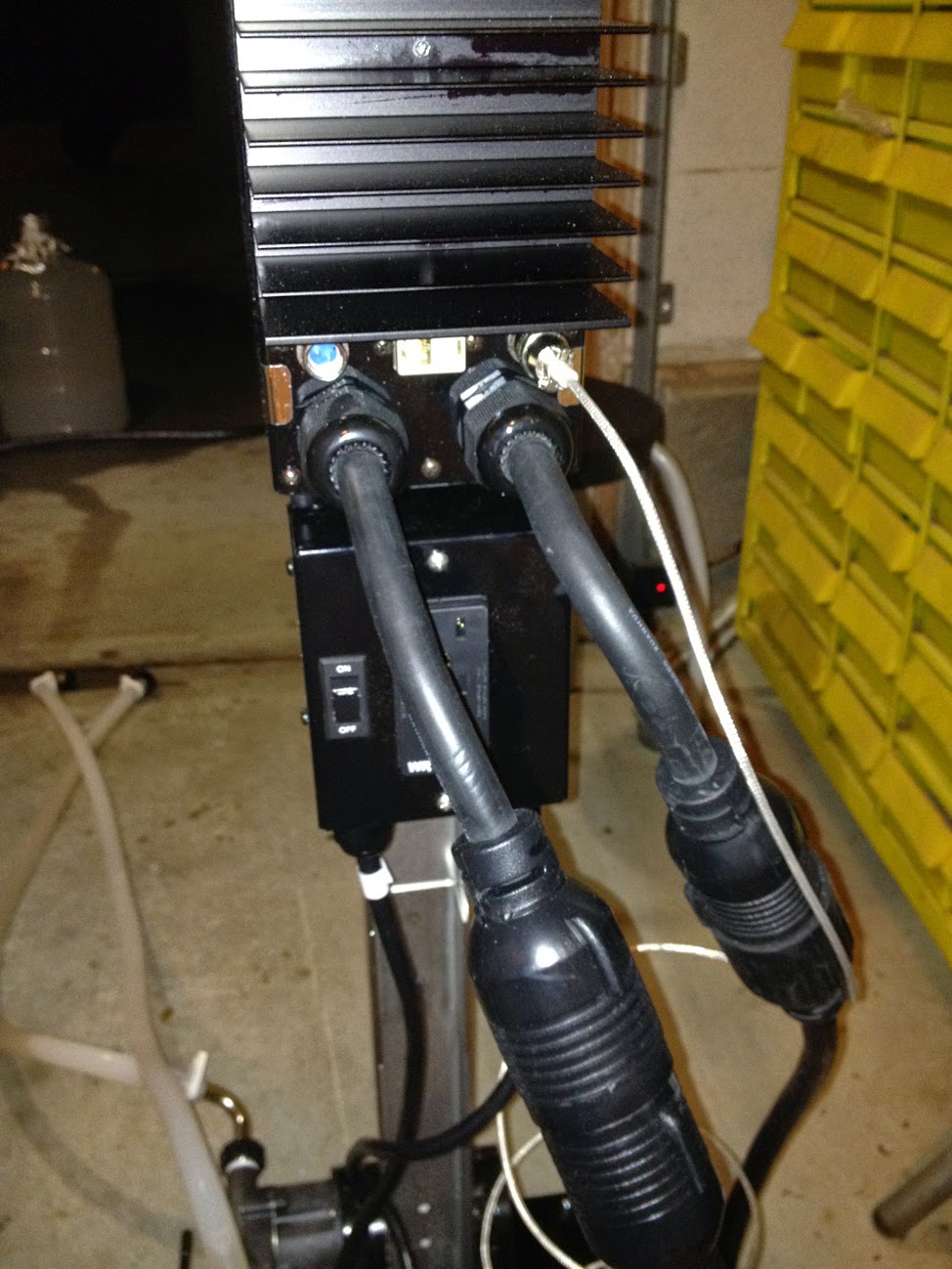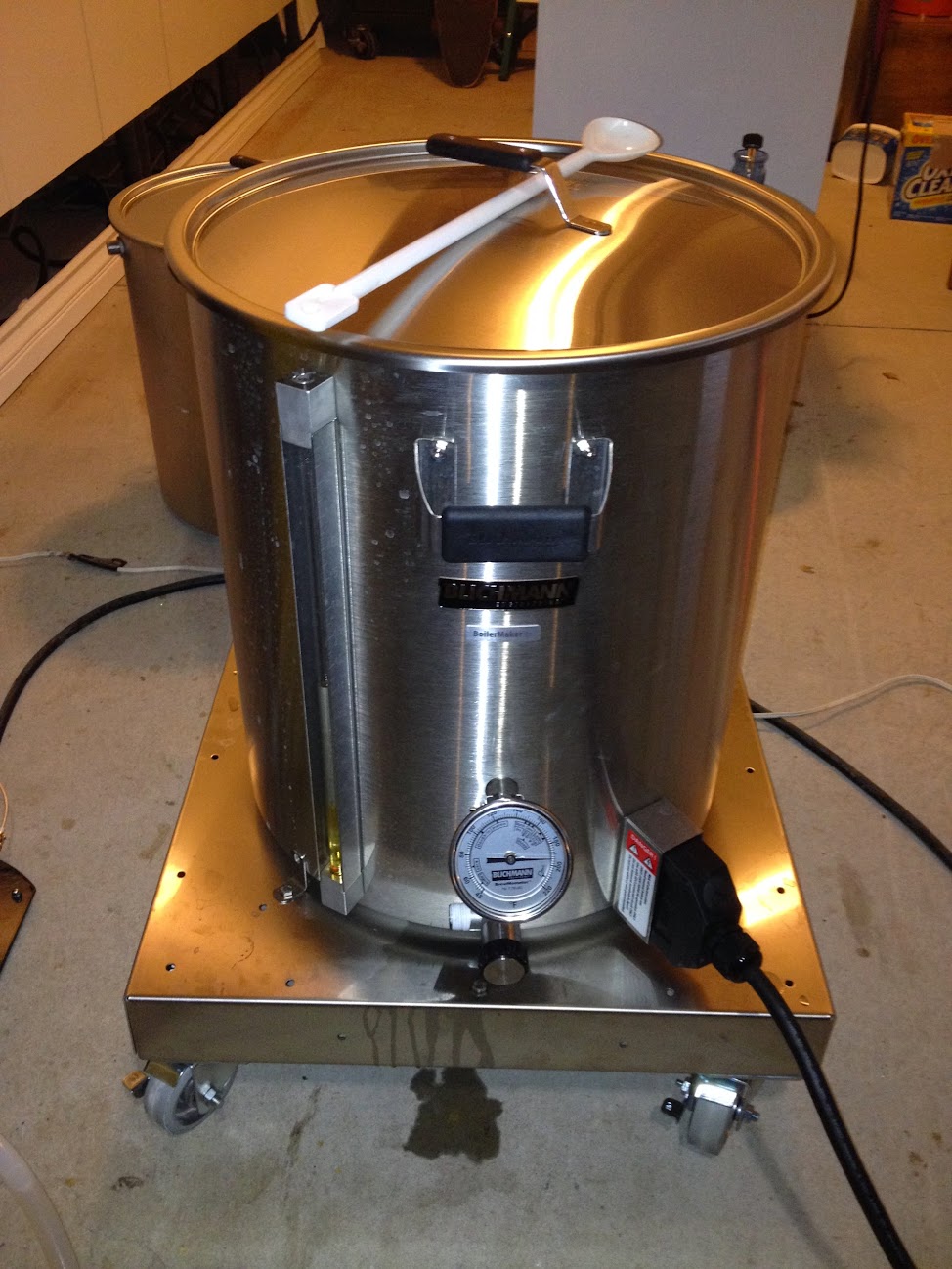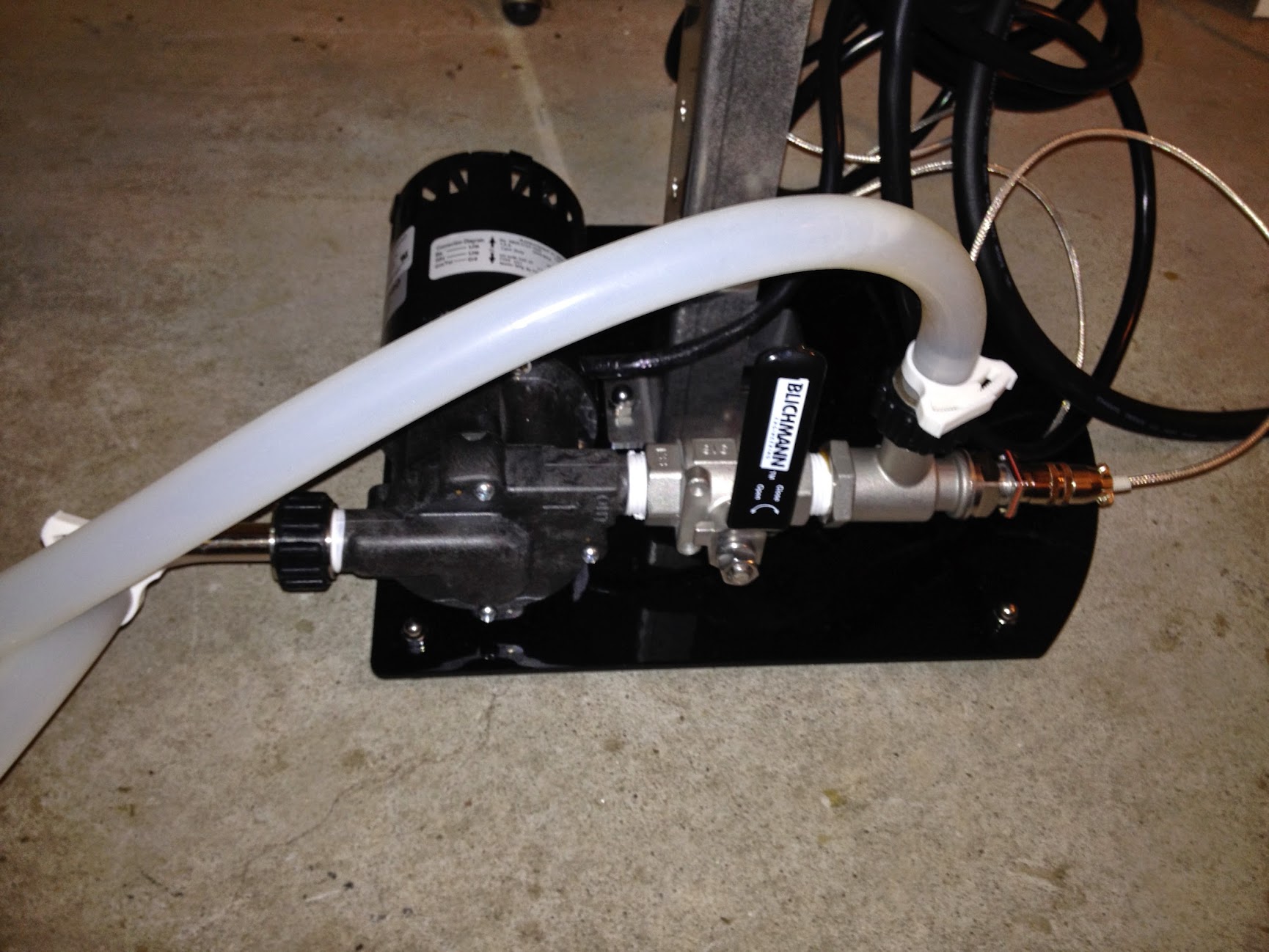WARNING: Mega-post ahead!
Alrighty... I did two batches this week. I have a bunch of details about my brew days but I'm still consolidating and trying to figure out my notes. In the meantime, I figured I'd start with a full review of all my new equipment, which is what's below in this post. Later this weekend I'll walk you through the brew days and provided some notes and stats on the BrewEasy. Here we go! :rockin:
I always find it helpful to know a bit about whos posting a review when I read one, so I figured Id do that for all of you:
Im 34 and started brewing in 2010.
Started with 3 extract batches in bottles and moved to all grain and kegs after that.
Used a rectangular cooler that I retrofitted for my mash tun, an 8 gallon boil kettle with thermometer and drain spout/valve, turkey fryer burner, plate chiller, PET carboys, small chest freezer with temp controller for fermentation and also for serving from kegs in-between batches.
Probably did about 8 batches on the aforementioned equipment.
Up until this week, I had only brewed 5 gallon batches.
3 years ago we sold our condo and moved in with the in-laws to save to buy a bigger place. All my equipment went into storage at that time. Only pulled it all out of storage to brew twice during that time and my last batch was a year ago! So Im RUSTY!
After being in the new house for 6 months, most of the major projects on the house are done, so now its back to brewing!
--- Vendor ---
9/10
Everything was purchased from Great Fermentations.
I went with GF because of all the great things I read about them, and Im very glad I did! They are super responsive and helpful.
There was a timing issue with some of the other items I ordered at the same time as my BrewEasy. They reached out to me to see what I preferred, which I really appreciated, instead of them just guessing or doing what worked out better for them.
--- Equipment Purchased ---
The turnkey system truly is turnkey. No other equipment is needed to start brewing after unboxing and assembling. I was skeptical of this but its true!

BrewEasy 10 Gallon 240v Electric system (turnkey system)
20 gal BoilerMaker G2, pre-drilled for BrewEasy/BoilCoil (part of turnkey system)
15 gal BoilerMaker G2, pre-drilled for BrewEasy (part of turnkey system)
False bottom for 20 gal BoilerMaker (part of turnkey system)
Blichmann AutoSparge (part of turnkey system)
Tower of Power LTE (part of turnkey system)
March 815 pump (part of turnkey system)
240v BoilCoil and required cables(part of turnkey system)
Fittings (all 1/2" Blichmann Quick Connect): 2 90° elbows, 2 straight (part of turnkey system)
Inline temp sensor and threaded fittings (part of turnkey system)
Ball valve (part of turnkey system)
½ silicon tubing and hose clamps (4) (part of turnkey system)
SS drain tube with quick connect fitting (part of turnkey system)
Kettle Kart (NOT part of turnkey system)
--- Instructions and Setup---
7/10
Overall I thought the instructions and documentation were pretty good. Ive read a lot of negative comments online about Blichmanns instructions so I probably went into thinking theyd be terrible.
Just like they say at the top of each instruction set, you really should read ALL of the instructions carefully before starting anything. I missed two things in my eagerness to get going that I thought were missing from the instructions, but found them after going back and reading them more closely. One of them was in bold

Take a look at the tools lists on the instructions and make sure you have it all before starting. I had to run to Home Depot halfway through installing the BoilCoil to pick up a deep socket. That was annoying but my own fault. I had all other necessary tools. With the turnkey systems, its pretty much just monkey and/or socket wrenches that youre using.
Again, I recommend reading all of the instructions for each individual part before starting anything, but read the BrewEasy instructions first and things will make more sense.
I was surprised that I had to wire the pump into the Tower of Power controller. I guess it makes sense why they have to ship them separately and have the consumer put it together. However, it was easy to do and things were labeled well. Tip: Make sure you remember to feed the wires through that damn tightening nut on the outside of the controller so you dont have to wire it twice!

The BrewMometers were easy to install. Just make sure you adjust the metal bracket/sleeve that determines which way the dial will bend BEFORE you install it into the kettle. Also, it does take a decent amount of force to turn that damn sleeve. I dont know why they ship with the dial bending down. Seems like most people would want them to bend up, right? Especially on this system.
The intake tube and inline valve come pre-installed on the kettles, which is nice. However, if you go with the KettleKart on an electric system, youll need to loosen the valve/spigot to turn it to the left at a 45 degree angle, since theres no room to fit the quick connect and tubing. And make sure you turn it to the LEFT so its pointing away from where youll be plugging in the BoilCoil chord.
Installing the LTE stand, controller, pump, ball valve, and temp sensor, and auto sparge, were all pretty straightforward. Just read carefully and look at the pictures for reference and youll be fine.
The BoilCoil was easy to install too, but I did have to run to Home Depot to buy a 7/8 deep well socket and 1/2" ratchet to be able to reach the bolts to tighten inside the plug guard.
Overall the setup wasnt too bad, but it definitely took me much longer than I thought it would to put together. Maybe 5 hours from unboxing to finally running test water through it? I was moving pretty slow though and Im known for not exactly being quick with this kind of stuff.
--- 240v BoilCoil ---
9.5/10 (I freakin love this thing!)
No problems at all bringing water or wort up to temp. With the 240v, getting a vigorous boil going is no problem. For both my batches I was running at about 78% power, give or take 5 percentage points depending on what was going on and the volume.
At one point my mash (second batch) was at 148 (29.5 lbs grain) and it only took 16 minutes to get it up to 154 by setting the controller to 160 (probably could have set the controller higher to heat the mash even faster). On the first batch, I went from ~160 in the boil kettle up to boiling in 20 minutes!
It makes absolutely no sound. Its kind of eerie, but was really nice to be able to talk at a normal volume during the boil. My old turkey fryer was like a jet engine.
I can sometimes have kids and dogs around when I brew, so the lack of an open flame is reassuring. Although one kid got pretty close pretty quick during the boil to look inside. I think a flame and the heat it gives off might be a more effective deterrent.
I was worried about scorching or burning if anything landed on or got stuck to the coil, but after two batches that did not seem to be an issue at all. This was including whole hop flowers in one of the boils. Didnt see or smell any signs of burning. Tasting the wort from the gravity readings showed no signs of this either.
No more having to worry about wind! It was fairly windy for my first batch and it was great not having to try to wrap my burner stand with foil!
My only gripe is the 240 version has a stupid little metal piece that you put on the backend of the coil to help keep the coils separated (couldnt find a picture online). Good intentions but horrible execution. It fits on the outside of the coils and can easily get bumped off. As soon as I saw it I thought, Well
Im sure Ill lose that soon. Sure enough, its already MIA. Im pretty sure I tossed it in the trash with all my post-boil trub, which Ill be digging through tomorrow morning. Fun. This is the only thing that prevented me from giving it 10/10. Heres a picture:
http://i.imgur.com/Mgg1zdS.png
--- G2 BoilerMaker Kettles ---
9/10
Overall the quality seems great. The stainless walls seem well crafted and quite sturdy. No doubt theyll last a lifetime.
The lids are nice. They fit really well and are nice and snug. Ive had lids that can be easily bumped ajar or completely off. These are the opposite of that. I wasnt sure about the fact that only one side of the handle is attached, but after two brew days I really like the design. Made it easy to grab and move around.
The glass volume sights are SO helpful. No more guessing or having to do something crazy to figure out your volumes. The metal casings around them seem like theyll really help to keep the glass safe. The numbers are hard to see since theyre only etched into the metal. Ill probably try taking a Sharpie to them or something.
The side handles are my biggest gripe. The underlying stainless seems fantastic, but then they covered them with two-piece hard plastic that looks glued together. I guess time will tell, but they look like they could crack within the first year. I could be wrong though. Well see.
I love the linear flow valves. Theyre awesome. So easy to control and I dont miss that annoying handle sticking out at all.
The intake tube inside the kettle does a great job picking up the wort, and I like how you can rotate it up or down, if needed.
The BrewMometers seem great so far. Easy to see, especially with being able to tilt them. I still need to test them against other thermometers though (shame on me). Probably should have done that before two batches.

--- March 815 Pump ---
7.5/10
Seems to work well so far. I do wish it came with a steel head instead of plastic though. It was kind of tough to get the quick connect on the intake side. I was afraid I was going to cross-thread because of how much pressure it took to get it on all the way.
It has a bit of volume to it but not bad. I dont have much experience with pumps though but so Im not sure how it compares.
It moves liquid quite quickly once it gets going but getting it started can take a while sometimes.
--- Tower of Power ---
9/10
Pretty slick. I havent owned a piece of equipment like it before, so maybe Im easily impressed, but its pretty cool.
Easy to use design. I like the On/Off/Auto settings (continuous heat/no heat/automated heat regulation base on the set temp).
I was VERY impressed with how well it works in conjunction with the BoilCoil. It does an incredible job in terms of retaining the temperature you set. Its a great combination (Tower of Power and BoilCoil). It seemed to keep the inline temp sensor very consistently within .2 degrees of the set temperature. I dont know that I ever saw it go beyond .2 from the set temp (maybe .3 when I wasnt looking?).
The power percentage on the top (percentage of power going into the BoilCoil, 0 being off and 100 being full power) was so easy to work with to control the boil.
--- LTE Stand ---
9/10
I actually wish I would have gotten the full stand (oversight during ordering) but now that its up and Im using it, Im quite happy.
I have it configured for full-height and the height works well for me. No need to stoop down. I cant comment on the compact configuration though. Im sure Ill just keep it full-height since storage isnt an issue for me.
Its pretty sturdy but still easy to move around.
--- AutoSparge ---
7/10
Not super impressed with this piece but it works.
It definitely works but it still feels a bit clunky and rudimentary, especially for a Blichmann product.
I think its actually by design but a decent amount of water flows out the back of the valve. Not a problem exactly but just kind of weird.
I was disappointed to see that the small float on the tubing (not the large float attached to the valve) was made of somewhat thin plastic. Im fairly certainly Ill crack that thing by accident at some point.
Seems like too much guesswork to try to get the float at the right level. And then if you get it wrong, you have to contend with 145+ degree water trickling onto your hands as you try to adjust it.
All said and done, it gets the job done and except for the little plastic float, Ill probably never have to replace it.
--- KettleCart ---
9/10
Super helpful! Very glad I bought it.
Easy enough to put together, except I with theyd mark the holes for the brackets that hold the kettle. Would be nice to know which holes to use for a given boilermaker size. Would have saved me some time.
Was able to easily wheel it around with 18.5 gallons between the two kettles and 30 pounds of grain in the mash tun. The ability to lock the wheels was helpful when moving it to my driveway, which has a slight gradient. Was easy to clean after a boil over.
--- QuickConnectors ---
10/10
No cons whatsoever so far! Super easy to use and very effective.
Putting them on and taking them off is a breeze. Not having to deal with a wrench is fantastic.
I also like that I cant over tighten them on accident, but that they still stay nice an snug.
The silicon grips are easy to use and stay cool.
I really like how they fit the O ring inside so it doesnt slip out. Nice to not have to worry about keeping track of another small part.
It was easy to fit on the silicon tubing and the clamps they provided work well to keep the hose on.
--- Misc. ---
Theres been concern over switching out the orifices in the drain tube. Its really easy. Not something to be concerned with, IMHO. You just close the valve, unscrew the quick connector (very easy) pop out the orifice and push in the new one, screw it back on, and open the valve. Takes a minute or less? Im more concerned about losing them!

--- BrewEasy ---
?/10
I dont want to rate the overall system yet. While there wasnt quite enough magic to give it a fantastic rating right out of the gate, I see the potential on the horizon and I feel it could be great once I get the hang of it.
As you can see from above, the individual components are fantastic. High quality. High performing. High potential. But for two batches I was not able to achieve what I was hoping for. However, I think like all new equipment, it takes learning and getting used to.
I think after another 3-6 batches Ill have the hang of it and will be able to accurately rate the system. My plan is to decide on a fairly simple recipe to brew multiple times in a row (suggestions welcome!), and to take ridiculous notes and stats for each batch. Im hoping that Ill then be able to feel confident that I can control the system and hit my numbers as expected.
As I mentioned, I'll be providing notes, stats, and etc. later this weekend (including efficiency notes on how my first batch was 64% but my second batch was 82%!).



